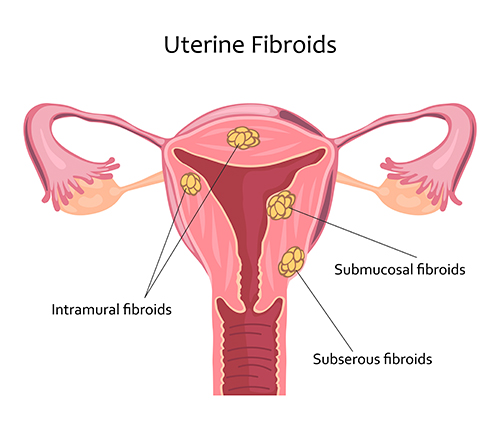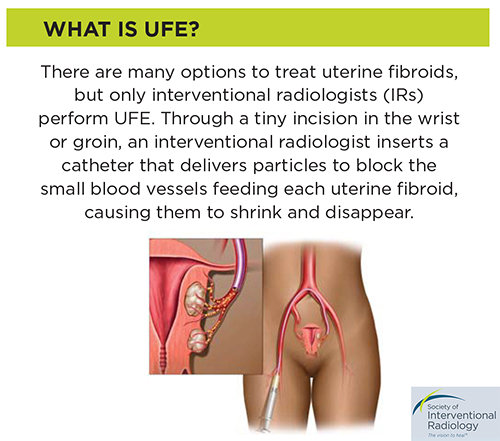Think a Hysterectomy is the Only Solution for Fibroids? Think Again. Treatment Can Involve a Simple Prick to the Wrist
WASHINGTON D.C., – When Nicole Austin-Hillery looks at her wrist, she sees a small, pinhole-sized scar. It’s the only visible sign of her recent treatment for uterine fibroids.

“It is hardly noticeable at all,” she says. “It looks like I have a little tiny mole there. There’s absolutely nothing. I don’t even think about that.”
July is recognized as Fibroid Awareness Month. Nationwide, one in three women suffer from fibroids, including 80% of African American women and 70% of Caucasian women by the time they reach the age of 50. Oftentimes, the tumors can cause very heavy menstrual bleeding, pelvic pain, increased abdominal girth and urinary symptoms.
 Earlier this year, Austin-Hillery, a D.C.-based civil and human rights attorney underwent uterine fibroid embolization (UFE) at MedStar Georgetown University Hospital. UFE is an established, minimally invasive procedure that treats fibroids without the need for major surgery. Several years ago, Austin-Hillery did have surgery to remove her fibroids, but the benign pelvic tumors came back.
Earlier this year, Austin-Hillery, a D.C.-based civil and human rights attorney underwent uterine fibroid embolization (UFE) at MedStar Georgetown University Hospital. UFE is an established, minimally invasive procedure that treats fibroids without the need for major surgery. Several years ago, Austin-Hillery did have surgery to remove her fibroids, but the benign pelvic tumors came back.
“They eventually grew to even bigger sizes and in multiplicity beyond what they had been originally,” she says. “I could really feel the impact of those fibroids and how they were interfering with my daily activities, particularly when it came to exercise.”
She was looking for way to address her discomfort without undergoing another operation like a myectomy or hysterectomy. After researching UFE on her own, Austin-Hillery was referred to Interventional Radiologist Theresa Caridi, MD, who specializes in the procedure.
“One in five women are under the impression that a hysterectomy, or surgical removal of the uterus, is the only way to treat uterine fibroids. It’s not true,” said Dr. Caridi. “Treatments like uterine fibroid embolization can be just as effective and carry fewer risks of major complications than surgery.”
During UFE, the fibroid is starved of blood supply as portions of connecting uterine arteries are blocked by a microscopic substance known as embolic or bead.
“We deliver the substance through a small catheter that’s inserted into either the patient’s wrist or upper leg. It only takes one to two hours,” Caridi says. “The fibroids aren’t removed but, following the procedure, they shrink into scars over several months.”
Austin-Hillery went forward with UFE and had the procedure in February 2019. The procedure only required a local anesthetic, she remembers being somewhat aware throughout. Afterwards, she did feel some side effects like nausea and abdominal discomfort, especially during the first day or so following the procedure, but they improved relatively quickly. A far cry from the recovery following a myectomy or hysterectomy.
“MedStar Georgetown was great. They checked on me. I called them when I had questions. Around day three, I started to feel better,” Austin-Hillery says.
 Best of all, she feels like uterine fibroid embolization worked. According to Dr. Caridi, the fibroids will continue shrinking for up to a year after the procedure, but Austin-Hillery says the difference is already noticeable.
Best of all, she feels like uterine fibroid embolization worked. According to Dr. Caridi, the fibroids will continue shrinking for up to a year after the procedure, but Austin-Hillery says the difference is already noticeable.
“I’m continuing to see changes in my abdominal area. My menstrual cycles are much better,” she says. “My comfort level when I exercise is just off the charts. Overall it was a win-win for me.”
For more information, visit: MedStarGeorgetown.org/Fibroids.
To schedule an appointment with a MedStar Georgetown interventional radiologist, please call 202-444-5478 or complete an online appointment request form.
Categories
Media Contact
Debbie Asrate
Director of Media Relations
Office:703-558-1287Debbie.Asrate@gunet.georgetown.edu









